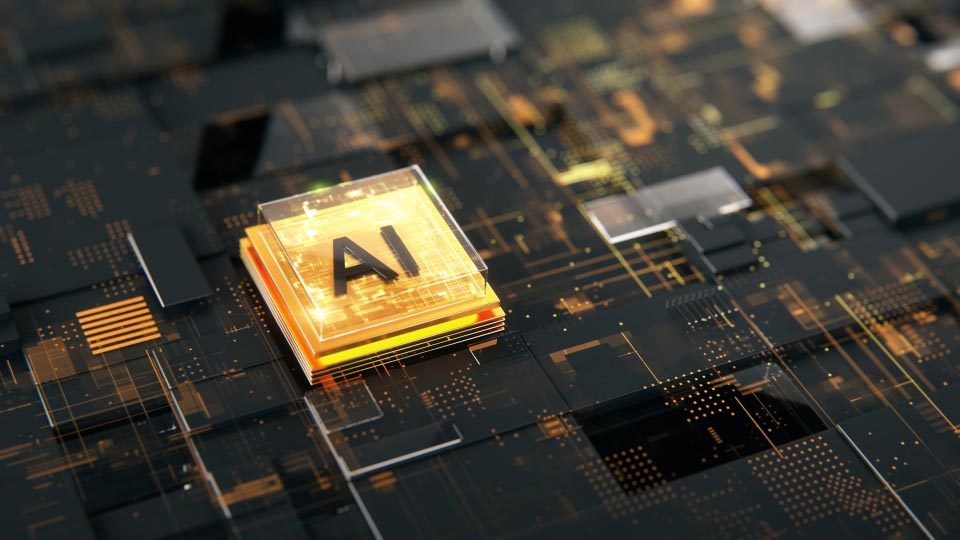Generative AI in 2026: Moving beyond infrastructure into the world of reasoning capabilities

We are well beyond the novelty and experimentation phase of Generative AI (Gen AI), with 2025 going down as the year when companies, regardless of industry, embedded the technology into core business operations. Looking ahead to 2026, the focus will no longer be on the sheer potential of the technology, but rather on its tangible value, responsible deployment and ability to address complex challenges related to scale, infrastructure and talent.
Extending that narrative, companies will move beyond simply deploying models and into assessing how, if and where to implement reasoning-capable Gen AI in the form of digital workers, redefined workflows and entirely new categories of enterprise automation. We will witness the emergence of “compound AI” architecture, which blend probabilistic reasoning from LLMs with deterministic systems, that will lead to a new generation of powerful and trustworthy use cases for the revolutionary technology.
Gen AI matures beyond general models
One of the most significant shifts we'll witness in 2026 is the move towards greater specialization and personalization in Gen AI models. While general-purpose Gen AI solutions will continue to play an important role, businesses will increasingly demand models that are fine-tuned to their specific needs, data sets and workflows. This trend will be driven by the recognition that generic Gen AI solutions often fall short of delivering the desired results in highly specialized domains. Instead, sophisticated enterprises will seek to become "mini LLM companies" actively collecting and curating data to train models that are uniquely tailored to their specific use cases.
Large frontier models will stay relevant and important, however, given their ability to innovate at a tremendous pace.
This hyper-personalization will extend beyond enterprise settings, impacting consumer-facing applications as well. Imagine AI-powered tools that integrate with your existing workflows, anticipate your needs and provide customized recommendations based on your unique preferences and data.
Agentic AI takes center stage
Agentic AI, where AI systems can autonomously perform complex tasks, will move from a promising vision to a practical reality in 2026. We'll see the rise of AI agents that can handle a wide range of responsibilities, from automating customer service inquiries to managing supply chain logistics, to even making investment decisions with limited human oversight.
The emphasis will shift from simply deploying AI agents to making sure they are reliable, secure and aligned with business objectives. Agents that can use reasoning, and make independent decisions, will be counted on to help with everything from executing daily errands to making timely strategic decisions. In addition, agents will interact independently with other agents and use their reasoning capabilities to have independent “conversations” and achieve tasks from booking flights to purchasing shoes.
This new paradigm will require robust evaluation frameworks, clear lines of accountability and ongoing monitoring to detect and address any potential issues. We will hear a lot more about “know your agent” or KYA.
We believe 2026 is not the year of agents, but instead just one year in a “decade of agents” that will affect how we live our lives and fundamentally affect the global economy.
Human–Gen AI collaboration takes off
As AI agents become more prevalent in the workplace, the nature of work itself will undergo a profound transformation. Employees will need to develop new skills to effectively collaborate with AI systems, manage their workflows and create rules that help these systems operate responsibly and ethically. The emphasis will be on augmenting human capabilities rather than simply replacing them.
This shift will require a significant investment in training and upskilling programs to equip employees with the knowledge and skills they need to thrive in an AI-driven world. It will also necessitate a rethinking of organizational structures and management practices to foster a culture of collaboration and innovation.
Data: Governance and stewardship remain essential
Data will remain the lifeblood of Gen AI models and platforms, but the focus will shift from simply collecting vast amounts of data to making sure data are high quality, relevant and used ethically. Organizations will need to invest in robust data governance frameworks to manage data privacy, prevent bias and make sure Gen AI systems are used in a fair and transparent manner.
As Gen AI models become more sophisticated and capable of handling sensitive information, data security will also become a top priority. Expect to see the emergence of new technologies and best practices for protecting data privacy and preventing data leakage in Gen AI models.
A thriving ecosystem: Platforms, tools and open standards
The proliferation of Gen AI will depend on the creation of a vibrant ecosystem of platforms, tools and open standards that enable seamless integration, interoperability and innovation. Cloud providers and specialized Gen AI vendors will play a crucial role in providing the infrastructure, models and services needed to support the growing demand for Gen AI solutions.
Open standards, such as MCP and A2A, will become increasingly important for enabling communication and collaboration between AI agents and disparate platforms. These standards will facilitate safe and secure collaboration among Gen AI systems regardless of their underlying technology or vendor.
On a related note, new startups designing LLM-first, workflow-native systems will likely challenge enterprise software incumbents who, for now, enjoy distribution advantages. That landscape may change as companies look to ramp up their Gen AI initiatives in the months ahead.
Vertical Gen AI: Tailored solutions for specific industries
While horizontal Gen AI solutions will continue to be valuable, the real breakthroughs will occur in vertical industries, where Gen AI is applied to solve specific problems and address unique needs. From health care to manufacturing to finance, Gen AI will transform the way businesses operate and deliver value to their customers.
One area where we can expect to see significant progress is in health care, where Gen AI will enable personalized medicine, accelerate drug discovery and improve patient outcomes. In manufacturing, AI will optimize supply chains, improve quality control and enable predictive maintenance, reducing downtime and increasing efficiency. Last, in finance, Gen AI will enhance fraud detection, personalize customer service and help automate regulatory compliance, ultimately improving consumer safeguards and simplifying the reporting process.
What’s next: Navigating challenges and realizing the promise
While the future of Gen AI in 2026 and beyond holds immense promise, it is essential to acknowledge the challenges that lie ahead. Overcoming issues related to trustworthiness, scalability and talent will be essential for realizing the full potential of this transformative technology.
What will truly differentiate success will be the ability to build out these tools in a way that not only promotes Gen AI but also provides improves the experience for customers on a daily basis. Ultimately, success with Gen AI will be judged on if we can use the technology to meet the customer when they need us and how they need us.

